Horsefly Dances and Castanets: Last (of the first) Days in Eibar
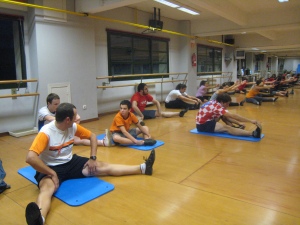 I had gotten pretty comfortable in Eibar, which was lovely, but I only had a few more days to enjoy it. I set to work planing my first excursion through Spain, seeking out dances in Cordoba, Huelva and Galicia. My plan put me on quite the whirlwind tour, but my work here wasn’t yet done, I still had practices to go to, museums to visit and experts to interview. Which happens to be the topic of this post! Over the next few days I managed to attend two practices of the Kezka dance group, which was a blast. The first practice was in their rehersal hall near the dantzan office in the evening. We arrived in the hall on the third floor of a nearby building to find many of the team members already arrived and stretching, getting ready for the dance. Unlike most Morris teams, there is some serious stretching and strengthening going on here!
I had gotten pretty comfortable in Eibar, which was lovely, but I only had a few more days to enjoy it. I set to work planing my first excursion through Spain, seeking out dances in Cordoba, Huelva and Galicia. My plan put me on quite the whirlwind tour, but my work here wasn’t yet done, I still had practices to go to, museums to visit and experts to interview. Which happens to be the topic of this post! Over the next few days I managed to attend two practices of the Kezka dance group, which was a blast. The first practice was in their rehersal hall near the dantzan office in the evening. We arrived in the hall on the third floor of a nearby building to find many of the team members already arrived and stretching, getting ready for the dance. Unlike most Morris teams, there is some serious stretching and strengthening going on here! 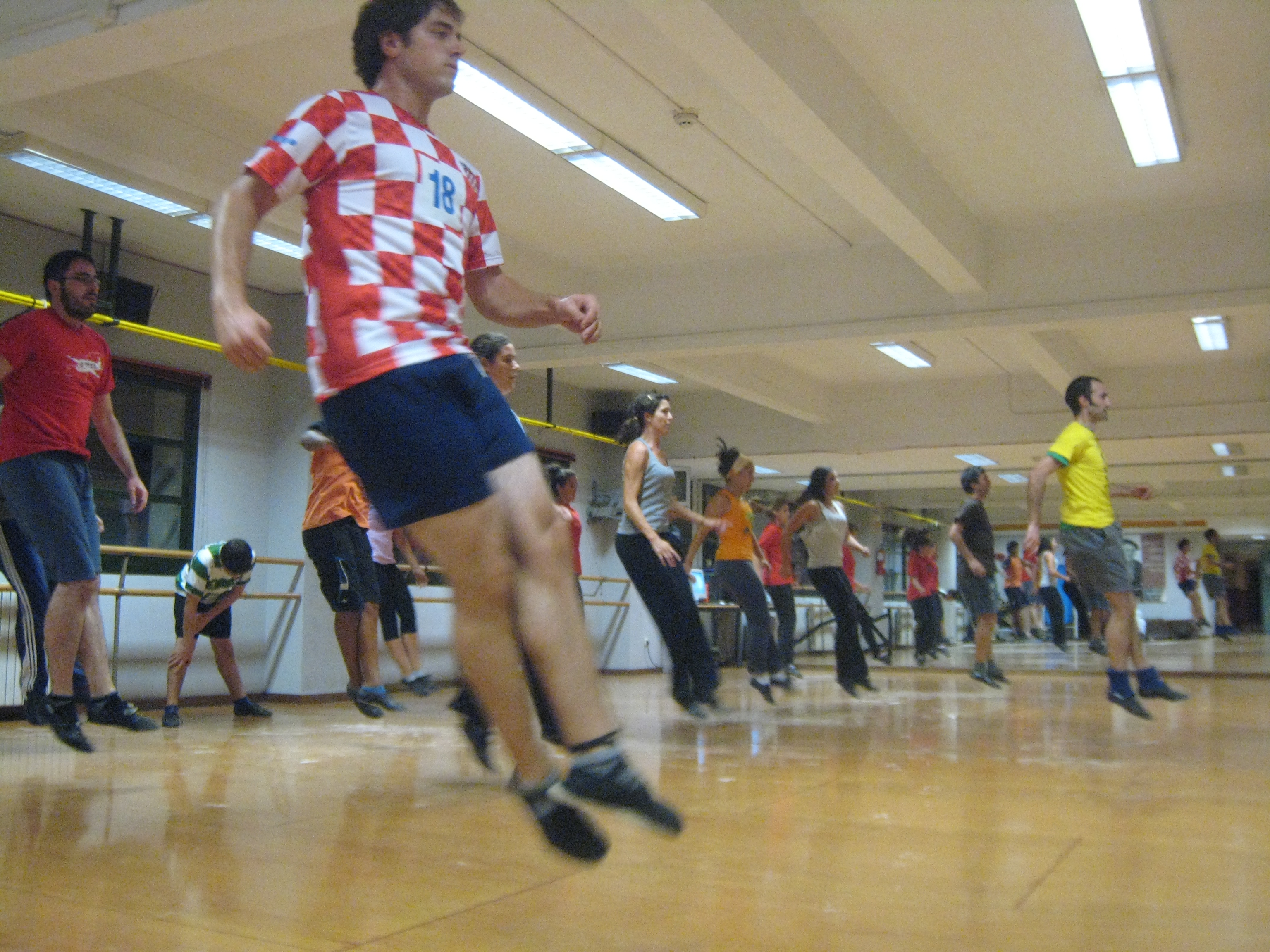
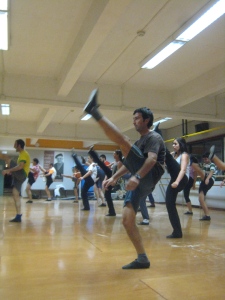 Of course, as you can see, this coincides with some fairly serious dancing!
Of course, as you can see, this coincides with some fairly serious dancing! 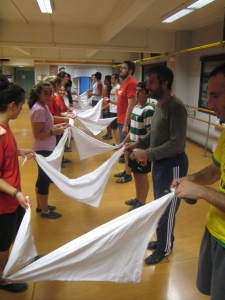 The practice then turned to a drill; a set series of steps that covered most of the basic (not very basic!) movements of the dances, in particular the solo dances. These included lots of kicks, jumps, and spins, in addition to the regular footwork. The music was blasted out of speakers around the room from a computer in the back corner. The room itself was a proper dance studio, with mirrors on two wall, barres on the side of the hall, and sprung wooden floors. After they danced the warm ups there were a variety of other dances, with castanets, handkerchiefs and just in partners.
The practice then turned to a drill; a set series of steps that covered most of the basic (not very basic!) movements of the dances, in particular the solo dances. These included lots of kicks, jumps, and spins, in addition to the regular footwork. The music was blasted out of speakers around the room from a computer in the back corner. The room itself was a proper dance studio, with mirrors on two wall, barres on the side of the hall, and sprung wooden floors. After they danced the warm ups there were a variety of other dances, with castanets, handkerchiefs and just in partners.
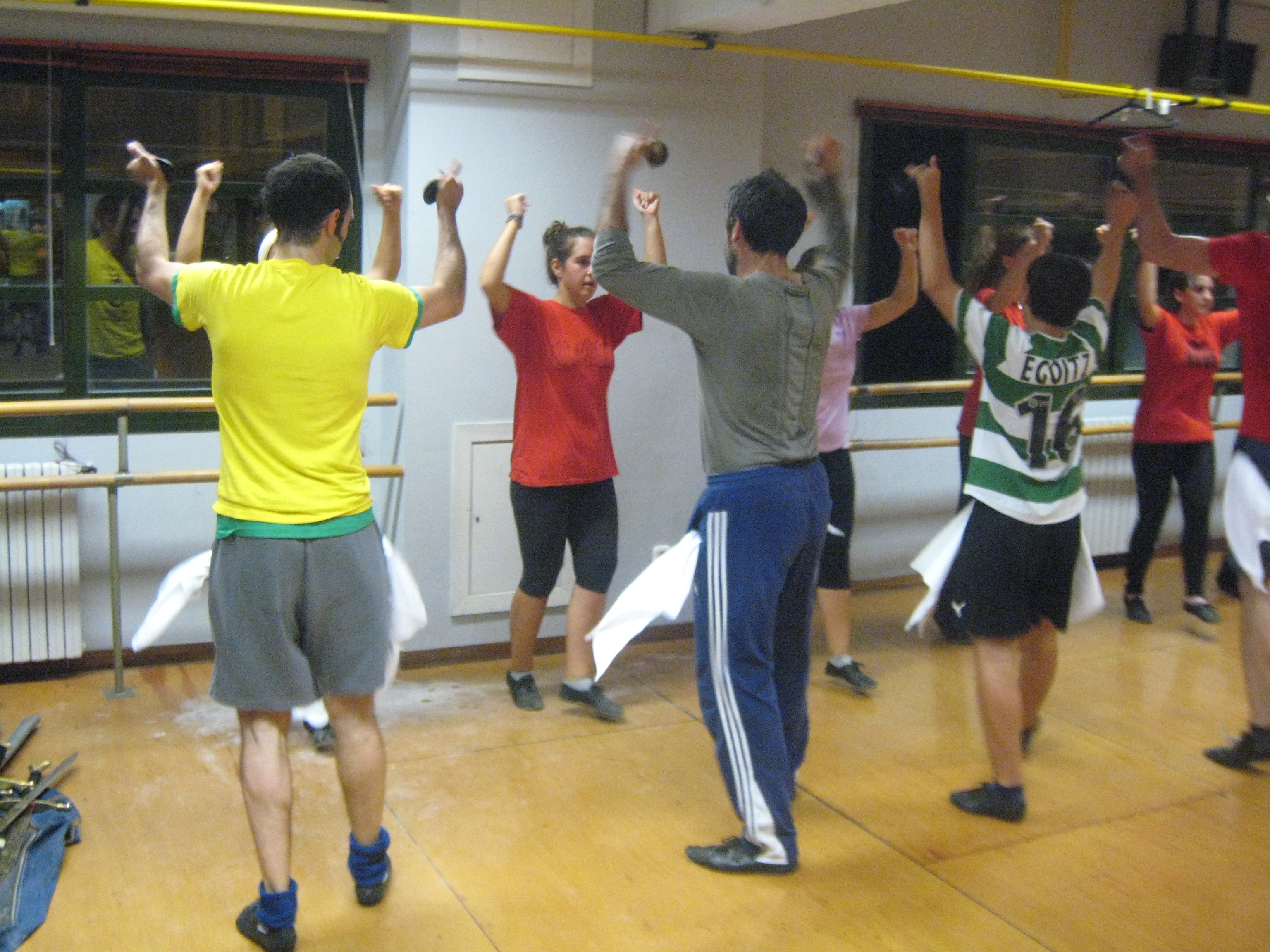
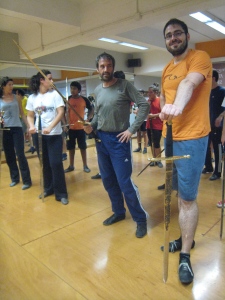
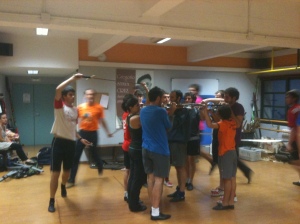 Oh, and of course we had the sword dances! The swords were super heavy and I could understand how it could get tiring to carry them for a long time! The practice was a lot of fun, and again it was great to see the similarities in dances. Does anyone else think that the photo above looks a lot like the one below? There are certainly differences, in the number of people and the
Oh, and of course we had the sword dances! The swords were super heavy and I could understand how it could get tiring to carry them for a long time! The practice was a lot of fun, and again it was great to see the similarities in dances. Does anyone else think that the photo above looks a lot like the one below? There are certainly differences, in the number of people and the 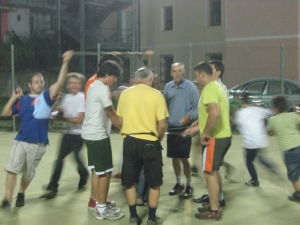
positioning of the swords, but the figure is danced in the same way otherwise. The team was rehearsing for a large performance that they were doing in mid-october with another team. The teams would start dancing separately from each other and then would perform this created figure linking them together. Afterwards the two teams would perform the lock in time with each other, an effort that required a fair amount of rehearsal and preparation to get the dancers synchronized and symmetrical. It is sort of cliche, and that fact has been noted by sword dance researchers for the past century, but I always get excited by the sword locks of various kinds that I find!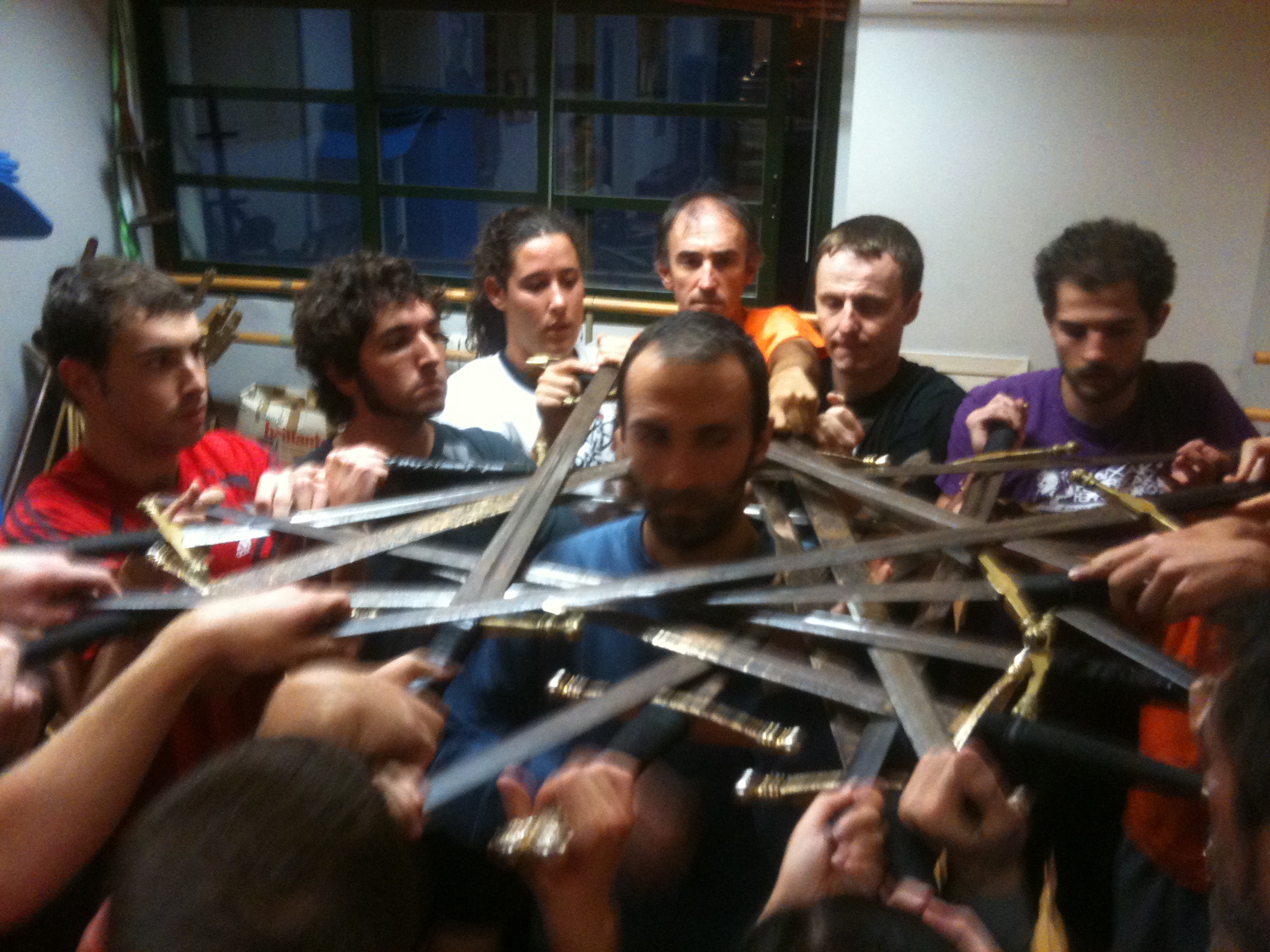
Once the lock is made, they lowered it down to the ground and lifted up the captain on top of the swords
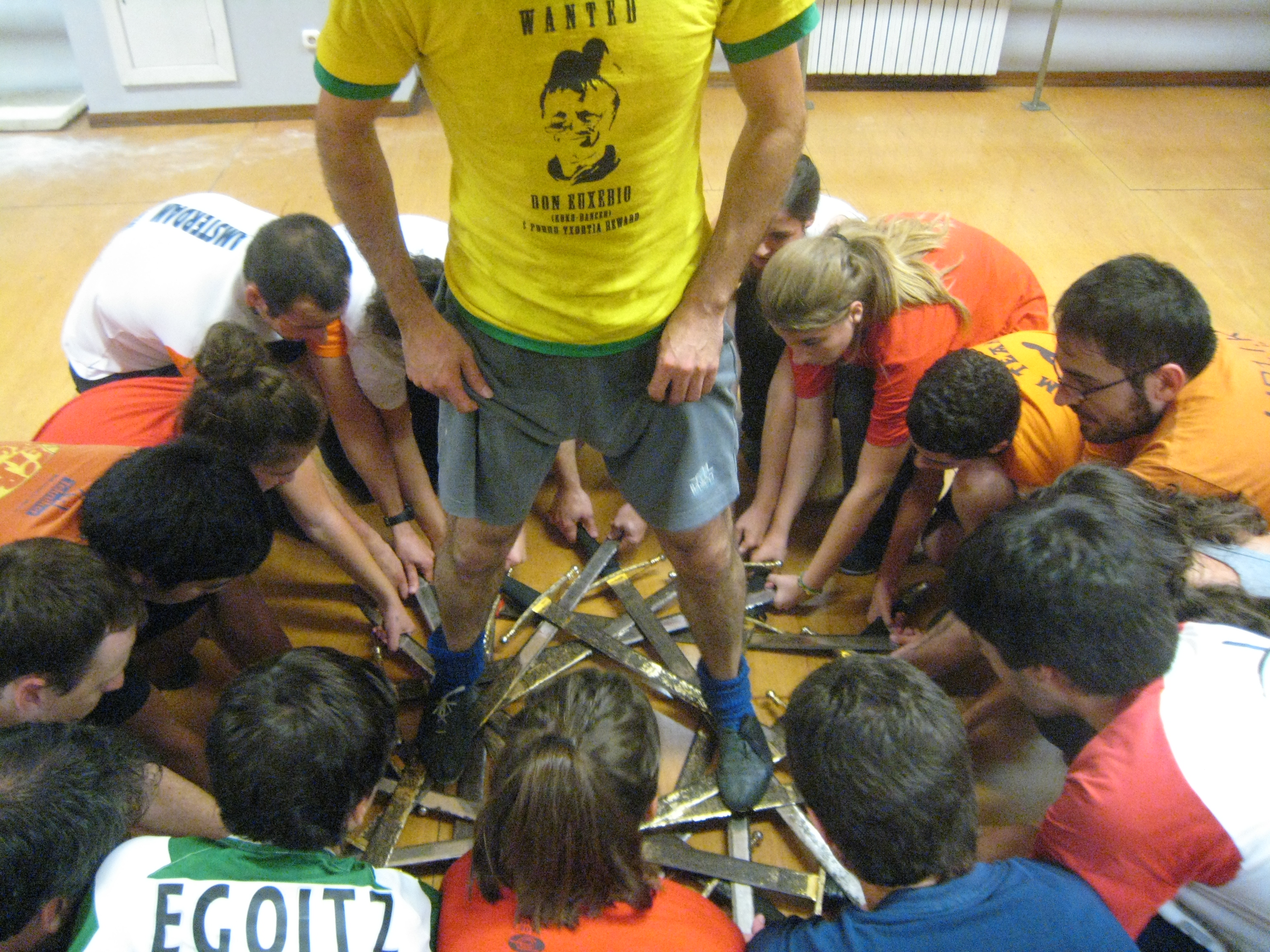
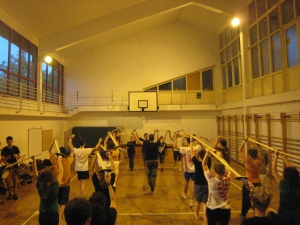 We finished up that practice with another teaching of Four Lane End, which was very well received and I went home to sleep. The next day we pilled into the car late in the evening to go to San Sebastian and rehearse with the Pampalona team. We met in a school, and performed the first set of drill inside the basketball court. I got to meet Juan Antonio Urbeltz, a prominent dance researcher, who was very interested in my work. Oier arranged for us to meet up and talk about sword dancing in the next few days. The teams practiced their steps for a little while (half of them using big wooden swords) while I talked to people on the sidelines. Then we all went outside to the football pitch, where they got to do a run through of the whole performance, using rolled up sweatshirts to mark the edges of the stage and other obstacles.
We finished up that practice with another teaching of Four Lane End, which was very well received and I went home to sleep. The next day we pilled into the car late in the evening to go to San Sebastian and rehearse with the Pampalona team. We met in a school, and performed the first set of drill inside the basketball court. I got to meet Juan Antonio Urbeltz, a prominent dance researcher, who was very interested in my work. Oier arranged for us to meet up and talk about sword dancing in the next few days. The teams practiced their steps for a little while (half of them using big wooden swords) while I talked to people on the sidelines. Then we all went outside to the football pitch, where they got to do a run through of the whole performance, using rolled up sweatshirts to mark the edges of the stage and other obstacles. 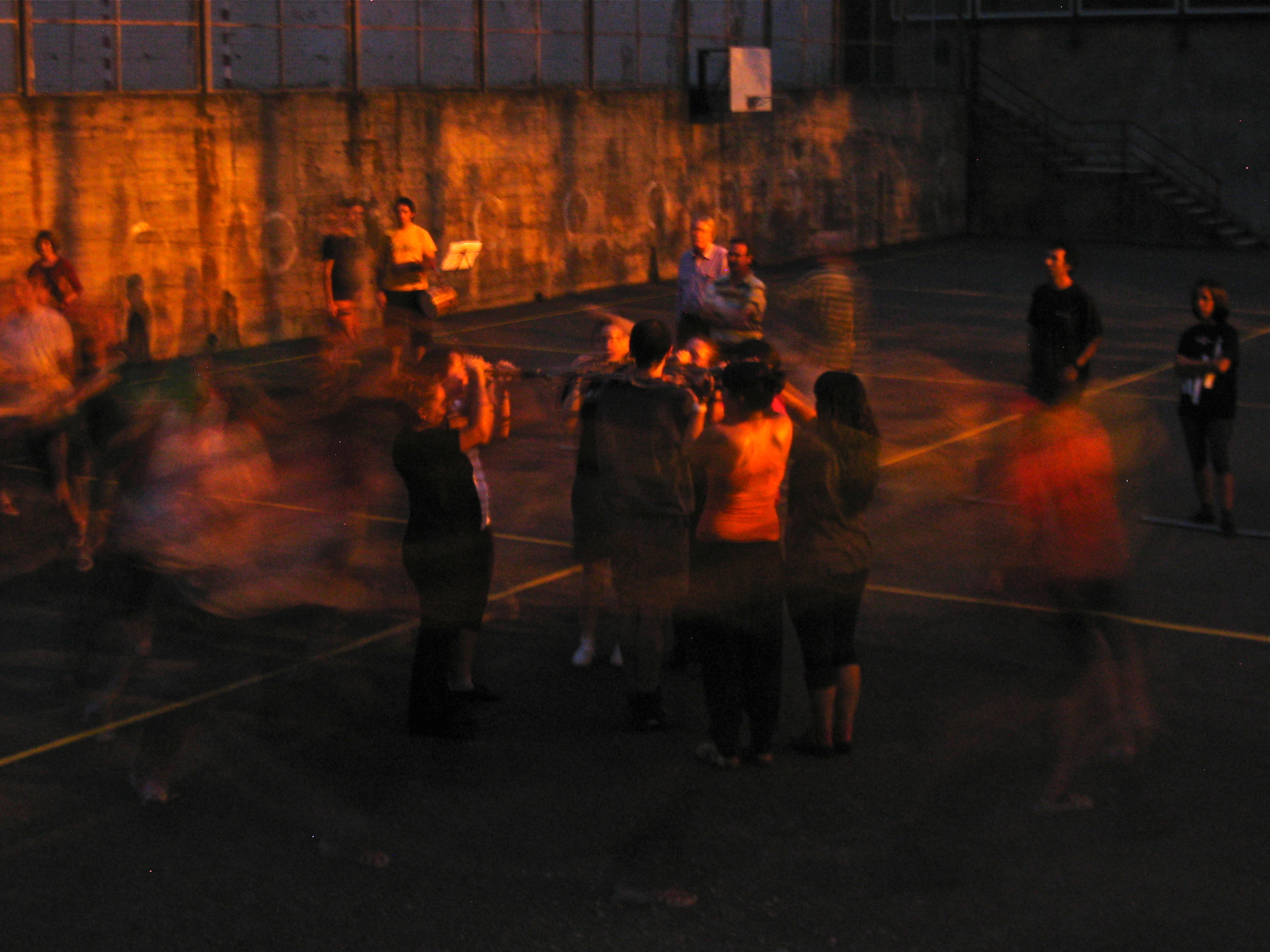
The semi-dark challenged my camera, but left me with some really cool looking shots! 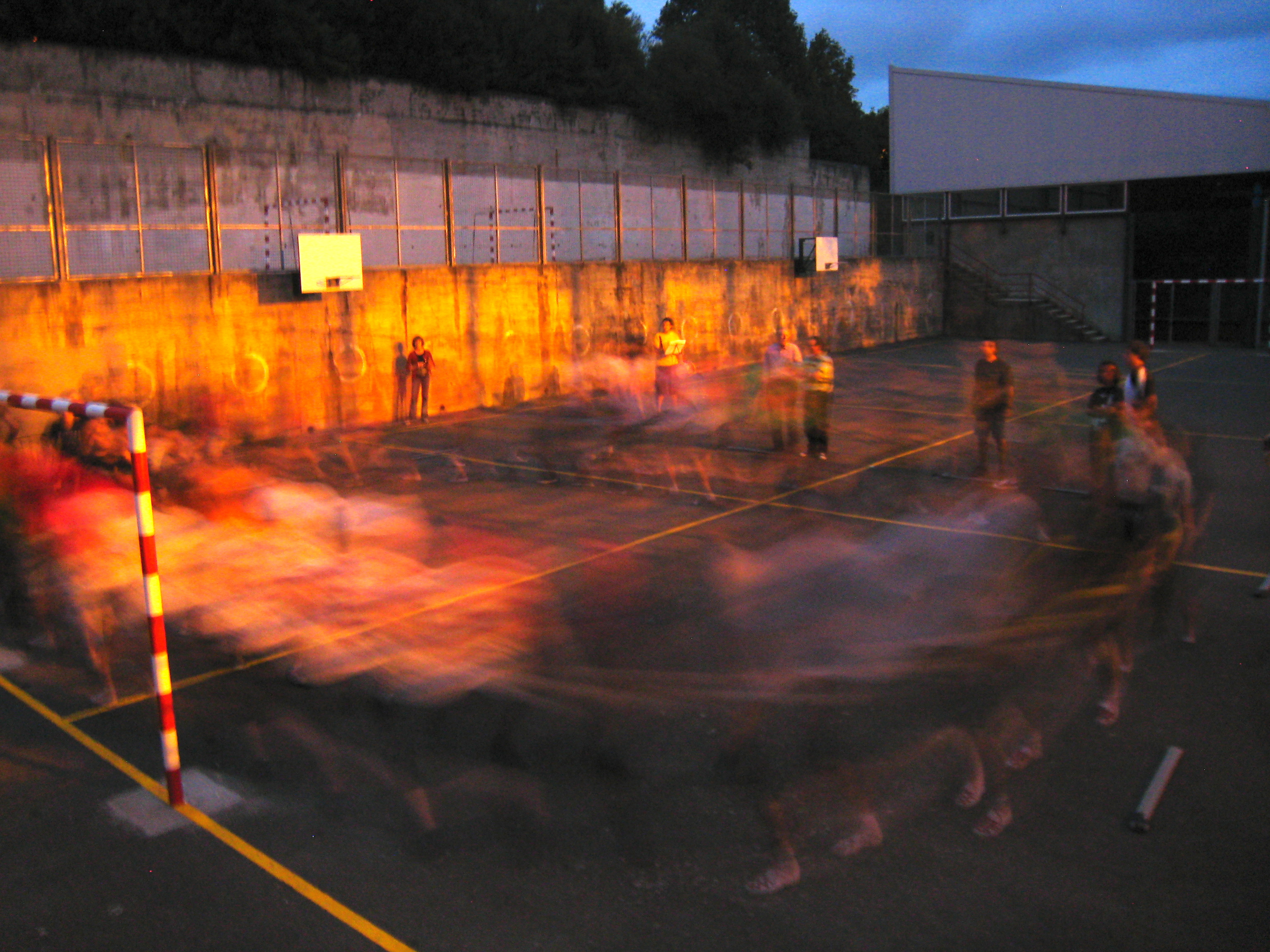
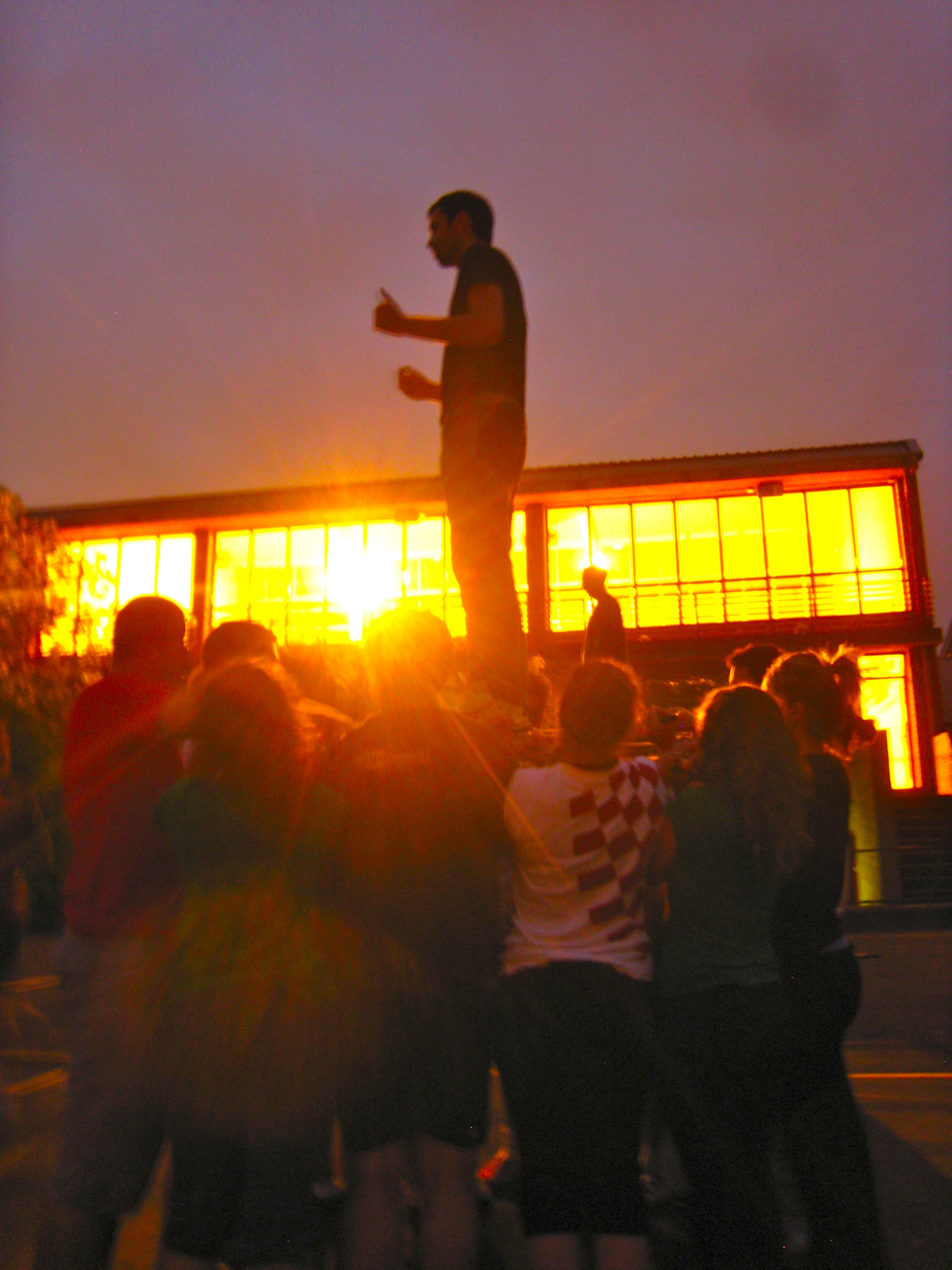 Ok, I’m leaving for madrid rather soon so i’m going to write fast. We met with Juan antonio who gave me the unpublished english manuscript on his book on morris dancing. His theories use linguistics to tie the origin of Morris dancing to rituals for warding off insects in the “moorlands.” He was a very interesting person to talk to (in english and spanish) and l am looking forward to finishing the book.
Ok, I’m leaving for madrid rather soon so i’m going to write fast. We met with Juan antonio who gave me the unpublished english manuscript on his book on morris dancing. His theories use linguistics to tie the origin of Morris dancing to rituals for warding off insects in the “moorlands.” He was a very interesting person to talk to (in english and spanish) and l am looking forward to finishing the book.
My other fun adventure was going with Oier to a museum of basque (and world) instruments. 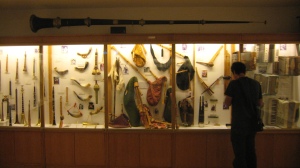 He knew the guy who ran the place, and so we got to try or have demonstrations of a number of the instruments. Nerds that we are, Oier and I were like kids in a candy shop. I posted a number of videos on my youtube channel of Oier playing a music game with sticks, and a player player piano, but I really wanted to show one in particular, of my new favorite instrument (aside from banjo of course), the Alboka! [youtube=http://www.youtube.com/watch?v=Hbq3lsDTd_g] An added tidbit was getting to see the house where Alan Lomax had stayed when he came to visit. We drove back and got some lunch, but my time in Basque country was drawing to an end. Tomorrow I was off to Cordoba, in the south of Spain! A big thank you to all my basque friends, you are wonderful!
He knew the guy who ran the place, and so we got to try or have demonstrations of a number of the instruments. Nerds that we are, Oier and I were like kids in a candy shop. I posted a number of videos on my youtube channel of Oier playing a music game with sticks, and a player player piano, but I really wanted to show one in particular, of my new favorite instrument (aside from banjo of course), the Alboka! [youtube=http://www.youtube.com/watch?v=Hbq3lsDTd_g] An added tidbit was getting to see the house where Alan Lomax had stayed when he came to visit. We drove back and got some lunch, but my time in Basque country was drawing to an end. Tomorrow I was off to Cordoba, in the south of Spain! A big thank you to all my basque friends, you are wonderful!